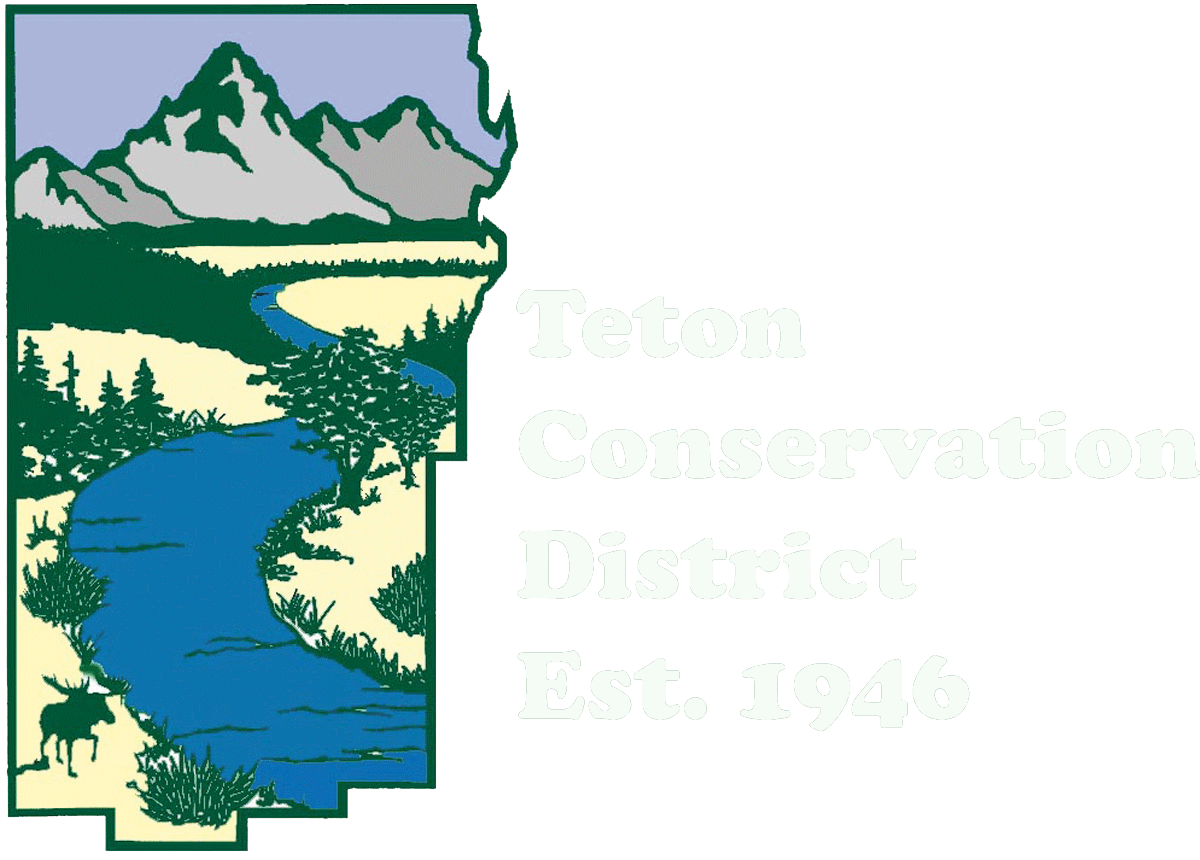Happy 75th Birthday Teton Conservation District!
Anniversaries like this offer a moment to pause and reflect on history. In celebration of our conservation heritage, we’re reflecting on how Teton Conservation District came to be. But, these last 75 years of conservation work are a mere blip in the 11,000-year history that humans have been connected to and made a living on this landscape. So, we’d like to honor not just our recent history, but the thousands of years that indigenous peoples and newer residents have stewarded this landscape. We continue appreciate the opportunity to work with our surrounding communities to conserve natural resources in Jackson Hole and beyond.
Feeding Cattle, 1954.
Showing the growth of tame hay, 1961.
Cache Creek Flood, 1974.
4H Camp Soil Lesson, 1975.
Our story begins with the Dust Bowl. As a result of severe drought, exacerbated by years of unsustainable agricultural practices, the Dust Bowl ravaged the west in the 1930s. Taking action to conserve soil and prevent erosion, Congress passed the Soil Conservation Act of 1935, which created the Soil Conservation Service (now called the Natural Resource Conservation Service), administered by the United States Department of Agriculture. In 1937, a model Soil Conservation District Law was developed and sent to each state governor, along with a letter from President Franklin D. Roosevelt urging them to empower local farmers and ranchers to create districts to conserve soil and water resources. Wyoming passed the Soil Conservation Act in 1941, leading to the voluntary formation of local conservation districts across the state. Today, there are 34 conservation districts in Wyoming.
During the coldest and darkest months of 1946, a committee of Jackson Hole residents including Jim Imeson, Cliff Hansen, Arthur Brown, Bruce Porter, Fred Toppings, and Amasa James came together and established Teton Soil Conservation District. Over the years, our name changed to Teton Conservation District and our boundaries expanded to include Grand Teton National Park and Wyoming’s portion of Yellowstone National Park. Since 1998, voters within the district area have approved up to one mill of property taxes every four years to fund the conservation district for the purpose of soil, water, wildlife, and other conservation programs.
Rooted in public support, 75 years of Teton Conservation’s District’s work demonstrates our dedication to our community and environment. With ever-increasing demands on the natural world, Teton Conservation District is committed to working with the community to carry out our shared vision for a better future. To learn more about what’s on the horizon, check out our 2020-2025 Strategic & Long-Range Plans.






